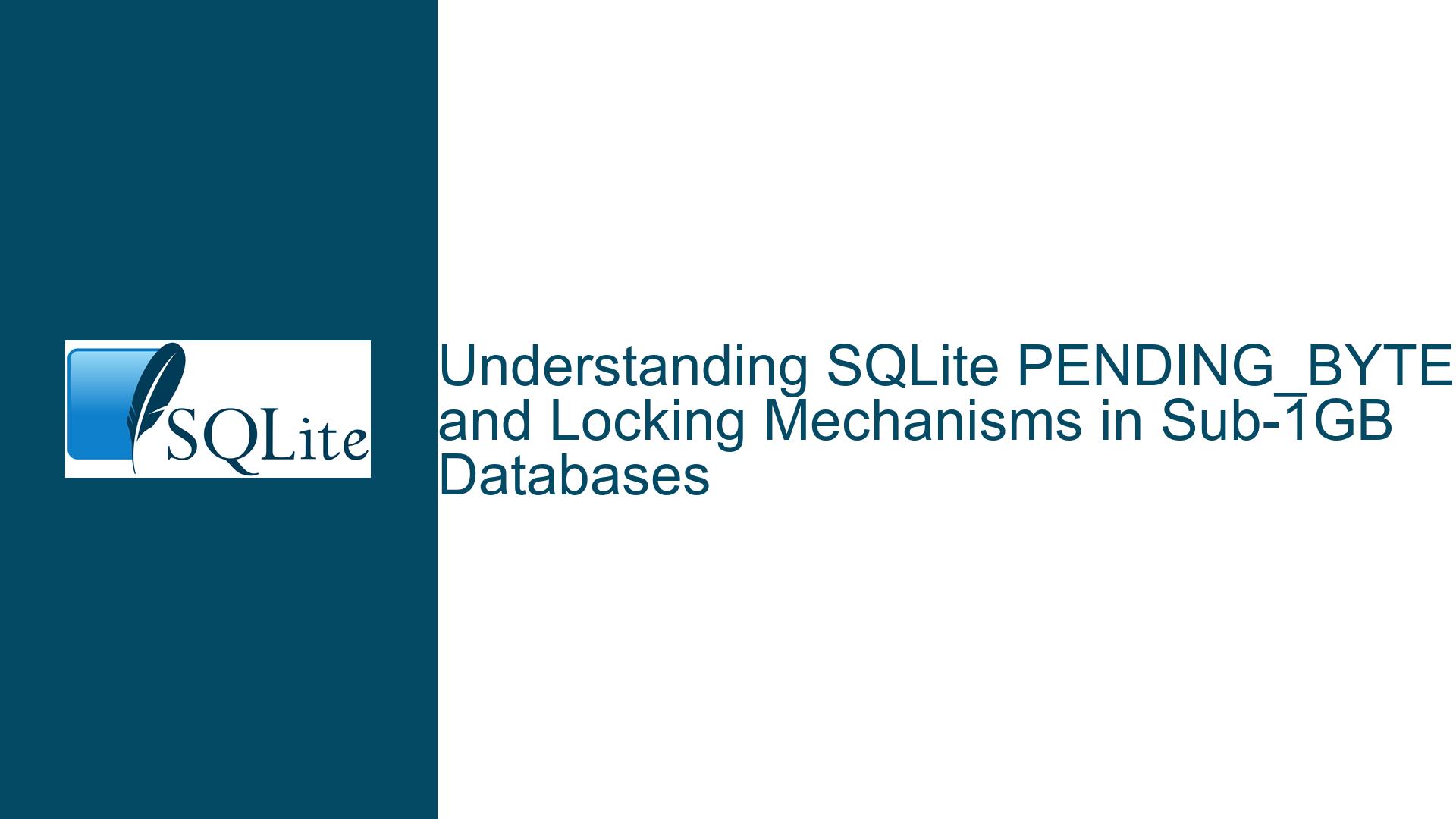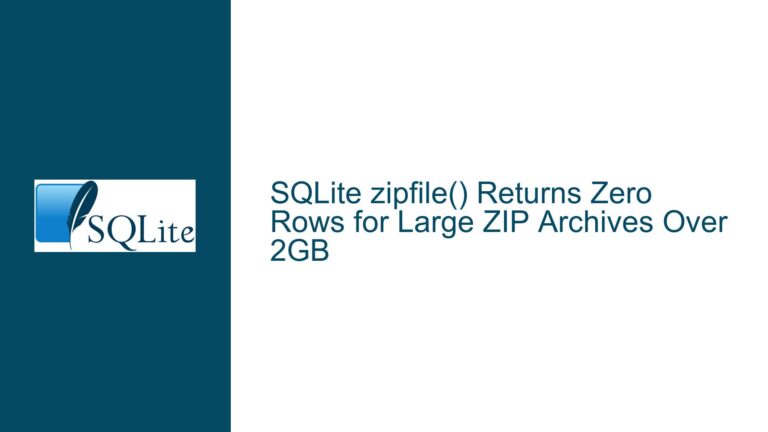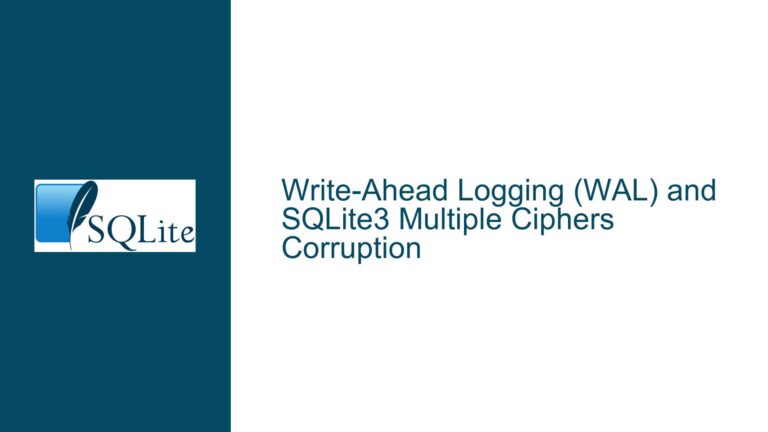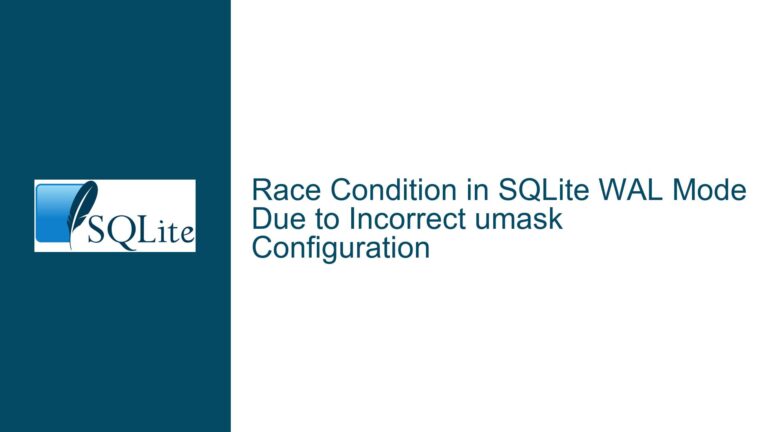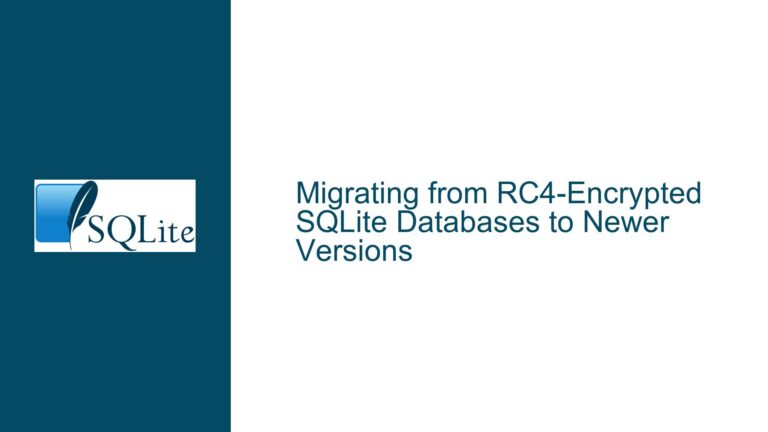SQLite PENDING_BYTE and Locking Mechanisms in Sub-1GB Databases
SQLite PENDING_BYTE and Locking Behavior in Sub-1GB Databases
The SQLite database engine employs a sophisticated locking mechanism to ensure data integrity and concurrency control. One of the key components of this mechanism is the PENDING_BYTE, which is a byte used for setting PENDING locks. The PENDING_BYTE is typically located at the 0x40000000 (1 GB) offset from the beginning of the database file. However, this raises an important question: what happens when the database file size is less than 1 GB? Where is the PENDING_BYTE located in such cases, and how does SQLite handle locking in these scenarios?
The PENDING_BYTE is a critical part of SQLite’s locking strategy, and understanding its behavior is essential for database developers and administrators. This post will delve into the intricacies of the PENDING_BYTE, its location in sub-1GB databases, and the implications for locking mechanisms. We will explore the underlying principles, potential issues, and practical solutions to ensure robust database performance and integrity.
Interrupted Write Operations and Locking Mechanisms
The PENDING_BYTE is part of SQLite’s locking system, which is designed to prevent data corruption and ensure consistency during concurrent access. The locking mechanism involves several types of locks, including SHARED locks, RESERVED locks, PENDING locks, and EXCLUSIVE locks. The PENDING_BYTE is specifically used for PENDING locks, which are intermediate locks that indicate a process is waiting to acquire an EXCLUSIVE lock.
In a typical scenario, the PENDING_BYTE is located at the 1 GB offset within the database file. However, when the database file size is less than 1 GB, the PENDING_BYTE still resides at the 0x40000000 offset. This might seem counterintuitive, as the file does not physically extend to that offset. The key to understanding this behavior lies in how the operating system handles file locks.
When a process requests a lock at an offset beyond the current file size, the operating system does not immediately expand the file to accommodate the lock. Instead, it acknowledges the lock request and ensures that if the file ever grows to that size, the lock will be enforced. This behavior is consistent across different operating systems, including Linux and Windows. For example, on Linux, the fcntl() system call can successfully lock a byte at the 1 GB offset in a file that is smaller than 1 GB. This is because the operating system treats the lock request as a future reservation, rather than an immediate requirement for file expansion.
This approach has several advantages. First, it avoids unnecessary file expansion, which could lead to inefficient use of disk space. Second, it simplifies the locking mechanism, as the PENDING_BYTE can always be located at a fixed offset, regardless of the file size. However, it also introduces some complexities, particularly when dealing with file systems that have specific limitations or when performing operations that require precise control over file locks.
Implementing Robust Locking Strategies with PRAGMA journal_mode and File System Considerations
To ensure robust locking behavior in SQLite, especially in scenarios involving sub-1GB databases, it is essential to understand and implement best practices for database configuration and file system management. One of the key tools for managing SQLite’s locking behavior is the PRAGMA journal_mode statement, which controls the journaling mode used by the database. The journaling mode affects how SQLite handles transactions and recovery, and it can have a significant impact on locking behavior.
The PRAGMA journal_mode statement supports several modes, including DELETE, TRUNCATE, PERSIST, MEMORY, WAL (Write-Ahead Logging), and OFF. Each mode has its own implications for locking and concurrency. For example, the WAL mode allows multiple readers and a single writer to access the database simultaneously, which can improve concurrency and reduce contention for locks. However, WAL mode also introduces additional complexity, as it requires careful management of the WAL file and checkpointing.
In addition to configuring the journaling mode, it is important to consider the file system’s behavior when dealing with file locks. Different file systems may have varying levels of support for locking, and some may impose limitations on the size or number of locks that can be placed on a file. For example, certain file systems may not support locking beyond a certain file size, or they may have performance implications when dealing with large numbers of locks. Understanding these limitations is crucial for designing a robust database system that can handle concurrent access and ensure data integrity.
Another important consideration is the use of database backups and recovery strategies. In the event of a power failure or other unexpected interruption, the database may become corrupted if the locking mechanism is not properly managed. Implementing regular backups and using tools like sqlite3_backup can help mitigate the risk of data loss and ensure that the database can be restored to a consistent state.
In conclusion, the PENDING_BYTE is a fundamental component of SQLite’s locking mechanism, and its behavior in sub-1GB databases is governed by the operating system’s handling of file locks. By understanding the principles behind the PENDING_BYTE and implementing best practices for database configuration and file system management, developers can ensure robust and reliable database performance. This includes configuring the appropriate journaling mode, understanding file system limitations, and implementing robust backup and recovery strategies. With these measures in place, SQLite databases can achieve high levels of concurrency and data integrity, even in challenging environments.
